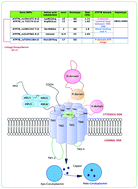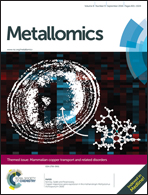Non-ceruloplasmin bound copper and ATP7B gene variants in Alzheimer's disease
Abstract
ATP7B, a protein mainly expressed in the hepatocytes, is a copper chaperone that loads the metal into the serum copper–protein ceruloplasmin during its synthesis and also escorts superfluous copper into the bile, by a sophisticated trafficking mechanism. Impaired function of this ATPase is associated with a well-known inborn error of copper metabolism, Wilson's disease (WD). Several mutations of ATP7B are known, involving different regions of the protein, thus resulting in a plethora of phenotypes in WD patients. It is a consolidated notion that copper dysmetabolism occurs in Alzheimer's disease (AD) as well. Besides the molecular mechanisms relating copper to the protein hallmarks of this disease and neurodegeneration, more recently the observation that a free-copper in the serum, not bound to ceruloplasmin (non-Cp–Cu), characterizes AD patients, prompted our research to identify possible genetic defects of the ATP7B gene in AD patients. Four specific single nucleotide polymorphisms and a WD rare mutation have a statistical association with AD. They contribute to characterize a copper subtype of AD. Additional facets of this AD phenotype, typified by higher levels of non-Cp–Cu, are presented and discussed in the framework of copper failure as an accelerator risk factor of neurological disorders with different aetiology.

- This article is part of the themed collection: Mammalian Copper Transport and Related Disorders

 Please wait while we load your content...
Please wait while we load your content...